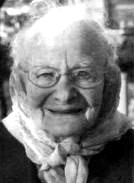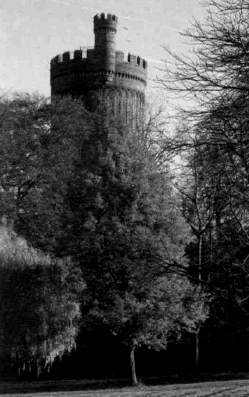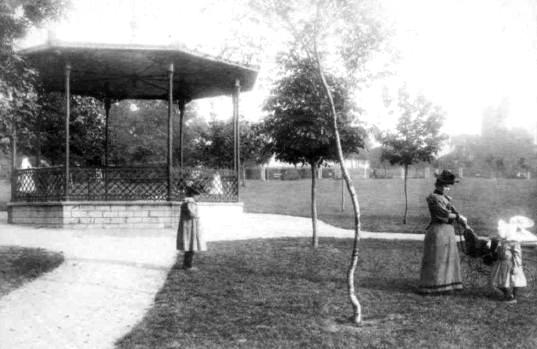
Addiscombe
Home
Heritage
Feedback
Park Hill
As unlikely as it may seem when considering today's hustle and bustle, there was a time when Park Hill, only a short walk away from Croydon's modern, vibrant town centre, was a deer park where the Archbishops of Canterbury hunted when the Old Palace was their summer home.
Possibly the most famous holder of the post of Keeper at The park was Sir William Walworth, the mayor of London best remembered for having killed the leader of the Peasants' Revolt, Wat Tyler, at Smithfield in 1381.

Joan Wilding regards Park Hill as her back garden. "I very often come to the park, just for a walk round. You don't see as many people here as you used to, I suppose children are taken out to other places in cars these days."
By the early 19th century the use of the parkland for deer had declined and the land began to be used for farming and racing. A race track is thought to have existed on the site occupied by Chichester and Selbourne Roads from about 1860 until the course was moved to Woodside.
Further development followed and the area became popular with wealthy businessmen who moved into large and impressive leasehold properties.
Francis Moore, who lived at No.1 Park Hill Rise gave a pleasant account of the rural nature of this area when he wrote in the Croydon Chronicle: "Ours was the first house built in the Rise in 1868, although Mr Henry Hart had six others in the course of erection. One could frequently hear the nightingale in those days and I once surprised a covey of partridges in my garden."

The park began to emerge in the mid 19th century. In late 1850 the local board of health surveyed the land to see if it would be a suitable location for a reservoir and a year later an acre of land was bought for £100. In 1867 the water tower was built in order to improve the water supply for the higher areas of Croydon.
Designed by borough engineer Baldwin Latham in a brick Norman style, the impressive and imposing 75-foot diameter structure was built to contain 950,000 gallons of water.
Although these developments helped to open up public access to the land, it was still not a popular solution. As the Croydon Advertiser reported in the 1880's, "The Reservoir is a very pretty walk for whispering lovers and children of older growth, but for boys who play cricket and such amusement the Reservoir Hill affords no attractions."
This problem began to be addressed in 1887, when Croydon Corporation bought 15 acres of land from the Ecclesiastical Commissioners for £4,000. An additional £2,000 was spent in laying it out with paths, grass and trees. "Park Hill Recreation Ground" was formally opened on 11 July 1888 by the Mayor of Croydon J.W. Hobbs.
This opening was attended by Jesse Ward founder of the Croydon Advertiser who expressed his disappointment that a little more money had not been spent in order to provide the new park with seats and a small bandstand.

It must be a fairly safe assumption that he was pleased when a year later FT Edridge was elected a councillor for the East Ward of Croydon and celebrated his success by providing a bandstand for Park Hill. The new facility helped to provide a holiday resort atmosphere as crowds took the air parading past the flowerbeds and listening to the music of the brass band.
During the same year, the attraction of the water tower was heightened when it was opened to the public as a viewing platform for 1d (one old penny) per person.
The outbreak of World War saw the water tower gaining a new function, that of a watch post. Its lofty height was an excellent vantage point for warning of the approach of hostile Zeppelins and bad weather. It was also ideal for observing fires and excessive lighting.
On a number of occasions the spread of fire which could have started up to 20 miles away was prevented by its position being promptly reported. This helped considerably to reduce the amount of damage and probably prevented loss of life.
Unfortunately the quick growth in the number of houses in the Park Hill area in the mid war years caused difficulties over the water supply in the neighbourhood. A new reservoir was built on higher land at Addington Hills and the central site was abandoned in 1923. Nonetheless the water supply did prove useful during World War II as a source to be used by fire-fighters.
The tower and reservoir finally ceased to hold water in the 1960's. A number of reports were presented to the council recommending that the tower be completely demolished but due to a huge public outcry the building became Grade II listed.
Now Park Hill is a much-loved and well used recreation area, containing such facilities as ornamental gardens, tennis and netball courts and a children's playground, while the water tower continues to dominate as a landmark for the people of Croydon and the surrounding area.